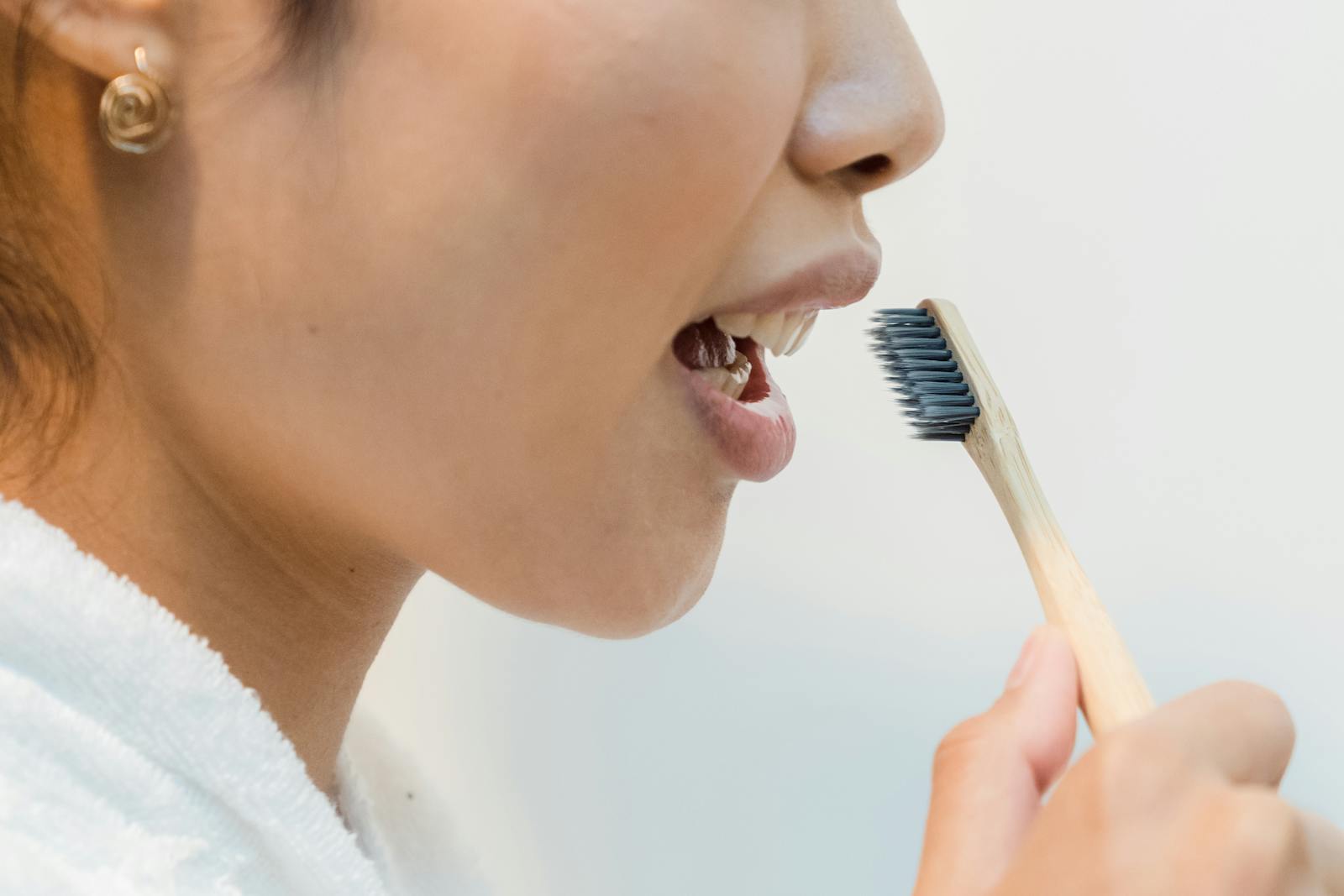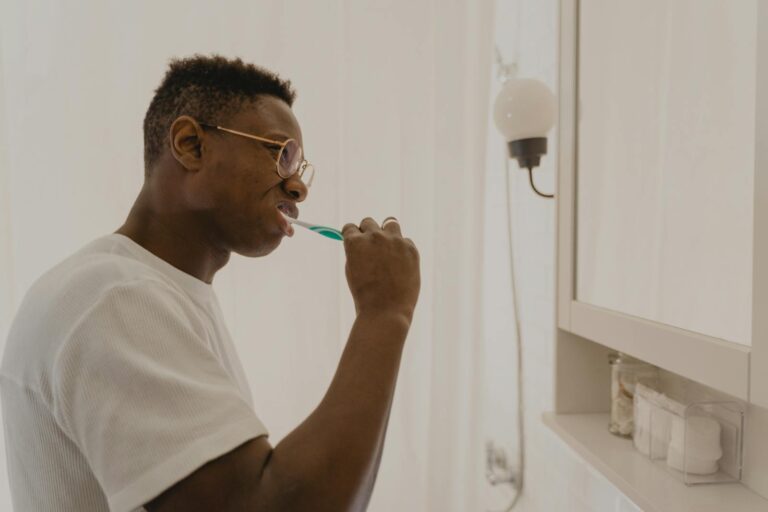How to Know If You Have Halitosis (Even If No One Tells You)
Bad breath isn’t something people usually point out. Most friends would rather suffer in silence than risk hurting your feelings. That’s why halitosis (the clinical term for chronic bad breath) can fly under the radar for years. But here’s the good news: there are ways to detect it yourself before it starts affecting your confidence or relationships.
In this post, we’ll explore practical signs, self-check methods, and subtle cues that may help you figure out if you’re dealing with halitosis—even if no one has said a word.
1. The Hand Cupping Test (With a Twist)
Most people instinctively do the hand-breath test: you exhale into your cupped hand, then take a whiff. But here’s the truth—this method isn’t very reliable. Why? Because your brain adapts to your own scent over time, making it harder for you to detect subtle (or even not-so-subtle) odors coming from yourself. So even if your breath smells, your brain might not register it.
A better approach: Lick the inside of your wrist and wait 10–15 seconds for it to dry. Then smell the area. This method gives your nose a fresh, isolated sample of the sulfur compounds (VSCs) that cause bad breath. Another great technique is to take a clean metal spoon, gently scrape the back of your tongue, let the residue dry for a few seconds, and then sniff the spoon. It may not be pleasant, but it’s a surprisingly honest reflection of what others might be experiencing.
These DIY sniff tests aren’t perfect, but they give you a clearer idea than breathing into your own hand ever will.
2. Ask Your Dentist (Seriously, We’re Used to It)
You might feel nervous bringing up bad breath with your dentist, but trust me—we’ve seen and smelled it all. Dentists are trained not just to look for cavities and gum issues, but also to identify signs of chronic halitosis that you might not be aware of. For example, we often notice things like a thick coating on your tongue, signs of dry mouth, plaque buildup beneath the gumline, or the presence of tonsil stones. All of these are key indicators that bad breath may be an issue, even if no one has mentioned it to you.
We also have special tools and techniques to measure the severity of your breath odor, including halimeters that detect sulfur compounds. More importantly, we can help you track down the root cause—whether it’s poor oral hygiene, gum disease, or something systemic like acid reflux or dry mouth from medications.
Dentist tip: Don’t let embarrassment hold you back. Talking about halitosis with your dentist is one of the fastest ways to get clarity and confidence. We’re here to help, not to judge.
3. Trust Your Taste
Before your nose picks up on anything, your taste buds might already be sending warning signs. A consistent bitter, sour, or metallic taste in your mouth can be one of the first indicators that something’s off. These unpleasant tastes often come from the byproducts of bacterial activity—especially from anaerobic bacteria breaking down food debris, proteins, or mucus. The resulting sulfur compounds don’t just smell—they also taste bad.
This is particularly noticeable first thing in the morning, after long periods of silence, or following certain meals. If you frequently wake up with a bad taste in your mouth, or find yourself constantly reaching for mints, gum, or mouthwash to cover something up, it may not just be habit—it could be your body’s subtle way of signaling halitosis.
Dentist tip: Pay attention to recurring bad tastes, especially when paired with dry mouth or thick saliva. These are signs worth exploring with your dentist, as they often point to an underlying issue.
4. Look for Physical Clues
Your mouth may be trying to tell you something—even if no one else does. One of the easiest ways to detect potential halitosis is to pay close attention to visible and physical signs during your daily oral care routine.
Start with your tongue. A white, yellow, or brownish coating, especially at the back, is often made up of dead cells, food debris, and bacteria. This coating is a major contributor to bad breath and may not come off with just brushing your teeth.
Next, examine your gums. Redness, swelling, or bleeding when you brush or floss are signs of gingivitis or more advanced gum disease, both of which are strong contributors to chronic halitosis. Also, take note of any signs of plaque or tartar buildup around the gumline and between teeth.
And don’t forget to check your throat. If you spot small, white or yellowish lumps at the back of your throat, you might be dealing with tonsil stones—calcified debris that smells bad and can silently fuel bad breath.
Dentist tip: Use a mirror with good lighting to inspect your mouth regularly. Go beyond the quick once-over and actually look for changes in color, texture, or buildup. Catching these signs early can save you from long-term dental issues and lingering breath odor.
5. Check Your Habits & Risk Factors
Sometimes, bad breath isn’t just about poor brushing or flossing—it’s tied to your lifestyle choices and daily habits. For example, smoking doesn’t just leave a lingering smell on your breath; it also dries out your mouth and affects your gum health, both of which create an ideal environment for odor-causing bacteria to thrive.
Similarly, certain medications—especially antihistamines, antidepressants, and blood pressure drugs—can reduce saliva production, leading to chronic dry mouth. Saliva acts as your mouth’s natural cleanser, and without it, bacteria and food particles stick around longer than they should.
Neglecting to floss regularly is another common culprit. Even if you’re diligent with brushing, leftover food particles between your teeth can ferment overnight and create foul odors.
Diet also plays a role. Low-carb or high-protein diets can lead to “ketone breath,” which has a fruity or acetone-like smell. High-sugar diets, on the other hand, feed the bacteria that produce sulfur compounds.
And don’t underestimate the effects of stress or dehydration. Both can significantly reduce saliva flow, setting the stage for bad breath to develop.
Dentist tip: Take a holistic look at your habits. Small lifestyle adjustments—like drinking more water, quitting smoking, or switching medications under your doctor’s advice—can lead to noticeable improvements in your breath.
Final Thoughts: Don’t Rely on Silence
Just because no one has said anything doesn’t mean your breath is in the clear. Halitosis is more common than you think—and more manageable, too. A little self-awareness, a couple of easy self-checks, and an honest conversation with your dentist can go a long way.



